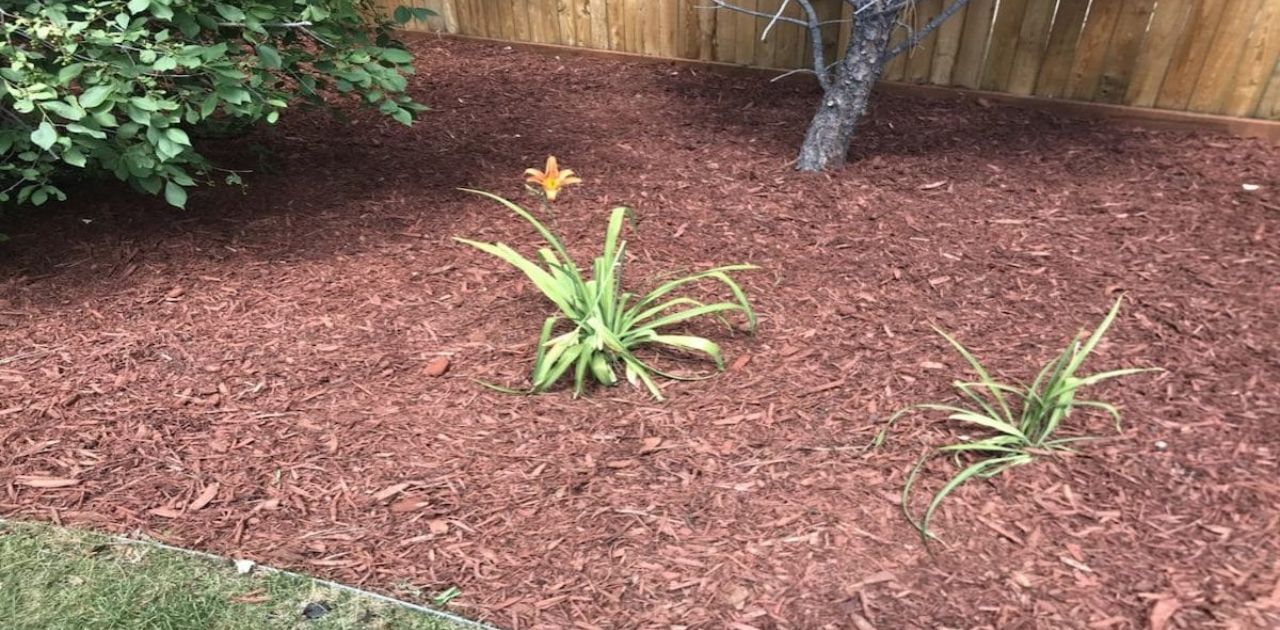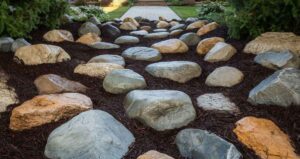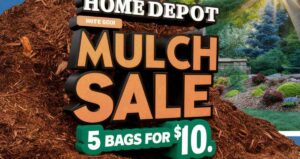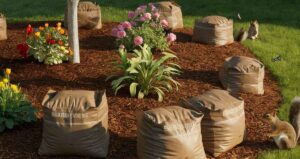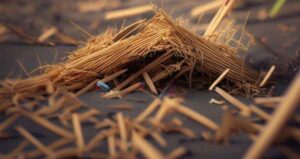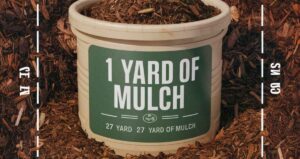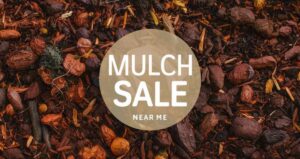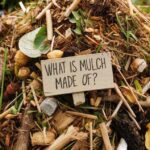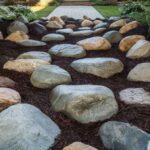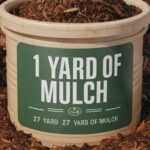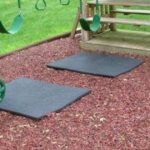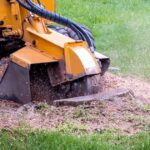In the world of landscaping, the choice between rubber mulch and traditional wood mulch is a pivotal decision that can significantly impact the aesthetics, functionality, and sustainability of outdoor spaces. Both options come with their unique set of characteristics, advantages, and considerations.
This exploration aims to unravel the question, What is better: rubber mulch or wood? By delving into the distinctive features of each material, we’ll navigate through the benefits, environmental implications, cost factors, and maintenance requirements associated with rubber and wood mulch.
Whether you prioritize eco-friendliness, cost-effectiveness, or long-term durability, this comprehensive analysis aims to provide the insights needed to make an informed decision tailored to your landscaping preferences and needs. Let’s embark on a journey to discover the optimal mulching solution for your outdoor haven.
Rubber vs. Wood Mulch: A Comparative Analysis
In concluding the comparative analysis between rubber and wood mulch, it’s evident that each material brings unique benefits to landscaping and gardening. While rubber mulch offers durability, low maintenance, and a longer lifespan, wood mulch provides natural aesthetics, decomposes to enrich the soil, and is generally more cost-effective.
The choice between rubber and wood mulch ultimately depends on individual preferences, project goals, and environmental considerations. By weighing the distinctive characteristics, advantages, and potential drawbacks of both options, individuals can make informed decisions tailored to their specific needs.
Whether opting for the resilience of rubber or the organic charm of wood, this comparative analysis serves as a valuable guide for enhancing outdoor spaces with the most suitable mulching material.
Benefits of Rubber Mulch in Landscaping
Unveiling the benefits of rubber mulch in landscaping reveals a versatile and eco-friendly option for outdoor spaces. Rubber mulch, made from recycled materials, provides superior durability, resisting decay and decomposition. Its color retention surpasses traditional wood mulch, maintaining aesthetic appeal over time.
An important benefit of rubber mulch is its capacity to suppress weed growth, lessening the necessity for ongoing maintenance. Moreover, this mulch variety serves as an exceptional insulator, aiding in the regulation of soil temperature and moisture levels. For homeowners contemplating what color mulch goes with red brick, the functionality of rubber mulch extends beyond aesthetics to encompass practical benefits for garden upkeep.
Its shock-absorbing properties make it a preferred choice for play areas, ensuring safety for children. By choosing rubber mulch for landscaping projects, you not only contribute to sustainability but also enjoy a low-maintenance solution that enhances the visual and functional aspects of your outdoor environment.
Exploring the Advantages and Applications of Rubber Mulch

Exploring the advantages and applications of rubber mulch reveals a versatile landscaping solution. Derived from recycled materials, rubber mulch is environmentally friendly, providing excellent insulation for plant roots. Its durability stands out, as it resists decomposition and fading, maintaining its vibrant color over time.
Ideal for play areas, rubber mulch offers enhanced safety, acting as a cushioned surface to reduce the impact of falls. Its ability to suppress weeds and retain moisture further showcases its practicality. Landscapers and gardeners appreciate the low-maintenance nature of rubber mulch, making it a reliable choice for both aesthetic appeal and functional benefits in various outdoor settings.
Advantages of Wood Mulch in Garden Design
In garden design, the advantages of using wood mulch are abundant and contribute to a flourishing landscape. Wood mulch, derived from organic materials, enhances soil structure, fostering optimal conditions for plant growth.
Its ability to retain moisture aids in moisture regulation, reducing the need for frequent watering and promoting a more resilient garden ecosystem. Wood mulch also acts as a natural weed suppressant, curbing the growth of unwanted vegetation and providing a clean aesthetic to garden beds.
Beyond its functional benefits, wood mulch decomposes over time, enriching the soil with essential nutrients. This sustainable cycle aligns with eco-friendly garden practices, making wood mulch a versatile and environmentally conscious choice for gardeners seeking both aesthetic appeal and long-term soil health.
Highlighting the Positive Features and Uses of Traditional Wood Mulch
Highlighting the positive features and uses of traditional wood mulch reveals its versatile applications in garden design. Wood mulch offers a natural aesthetic, seamlessly blending with various landscaping themes. Its ability to regulate soil temperature, suppress weeds, and retain moisture contributes to plant health and garden sustainability.
Additionally, wood mulch enhances soil structure over time, promoting a thriving ecosystem. The organic nature of wood mulch decomposes gradually, enriching the soil with nutrients. These positive attributes make traditional wood mulch a preferred choice for gardeners seeking both aesthetic appeal and functional benefits in their landscaping endeavors.
Environmental Impact: Rubber vs. Wood Mulch
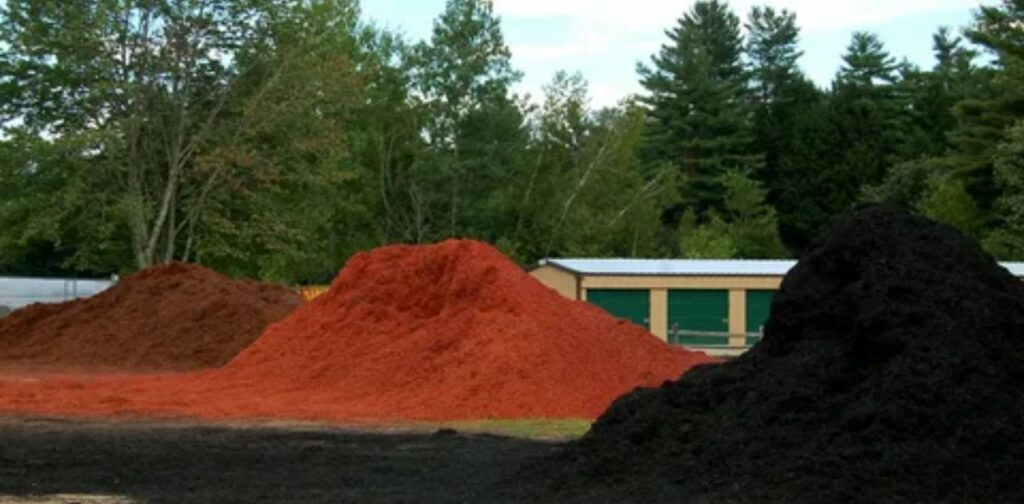
The environmental impact of choosing between rubber and wood mulch is a crucial consideration for eco-conscious landscaping. While rubber mulch is often made from recycled materials, it is essential to evaluate its overall sustainability and potential long-term effects.
Traditional wood mulch, derived from natural sources, is biodegradable and contributes to soil enrichment. However, the sourcing and production of wood mulch must align with responsible forestry practices to minimize ecological impact.
Understanding the environmental implications of each option is key to making an informed decision that aligns with sustainable landscaping goals. By delving into the environmental impact of rubber versus wood mulch, you can cultivate a garden or landscape that not only looks beautiful but also harmonizes with nature.
Examining the Ecological Footprint and Sustainability of Each Mulch Type
Examining the ecological footprint and sustainability of rubber and wood mulch is crucial for environmentally conscious landscaping. Rubber mulch, often recycled from tires, has a longer lifespan, reducing the need for frequent replacements.
However, it poses concerns about non-biodegradability. On the other hand, wood mulch, sourced from natural materials, decomposes over time, enriching the soil. Yet, it may necessitate more frequent replenishment.
Balancing the benefits and drawbacks, understanding the ecological impact is essential for making informed choices that align with eco-friendly landscaping practices and long-term sustainability goals.
Cost Considerations: Investing in Mulching Materials
When contemplating mulching materials, cost considerations play a pivotal role in decision-making. Assessing the financial aspects of rubber and wood mulch is crucial to aligning landscaping or gardening projects with budgetary constraints.
While rubber mulch may have a higher upfront cost, its longevity and reduced need for replacement could result in long-term savings. On the other hand, traditional wood mulch may offer a more budget-friendly option initially, but frequent replenishment and potential decomposing factors contribute to ongoing expenses.
It’s essential to weigh the upfront investment against the overall cost of ownership, factoring in the lifespan and maintenance requirements of each mulching material. By evaluating these cost considerations thoughtfully, you can make an informed decision that aligns with your financial goals and landscaping needs.
Maintenance and Longevity of Rubber vs. Wood Mulch
When deciding between rubber and wood mulch, evaluating the maintenance and longevity is crucial. Rubber mulch boasts durability, with resistance to decay, pests, and color fading, requiring minimal upkeep over time.
Its longer lifespan often outweighs the initial investment. Conversely, wood mulch decomposes over time, contributing to soil enrichment but requiring regular replenishment. While wood mulch demands more frequent maintenance, some gardeners appreciate its natural decomposition process, contributing to soil health.
Consider the specific needs of your landscaping project, desired aesthetic, and long-term maintenance preferences when choosing between rubber and wood mulch. Each option offers distinct advantages, and understanding their maintenance and longevity characteristics is essential for making an informed decision tailored to your landscaping goals.
conclusion
In conclusion, the choice between rubber mulch and wood mulch ultimately depends on a combination of personal preferences, specific landscaping needs, and environmental considerations. After a thorough exploration of the distinctive characteristics, benefits, environmental impact, cost factors, and maintenance requirements of both rubber and wood mulch, it becomes evident that neither option universally outweighs the other.
Each mulch type possesses unique advantages, contributing to diverse applications in landscaping and gardening. Ultimately, what is better—rubber mulch or wood—boils down to individual priorities, such as aesthetics, sustainability goals, and budget constraints.
As users weigh these factors, it is recommended to consider the specific context of their landscaping projects and make an informed decision based on a balanced evaluation of the merits offered by rubber and wood mulch.
